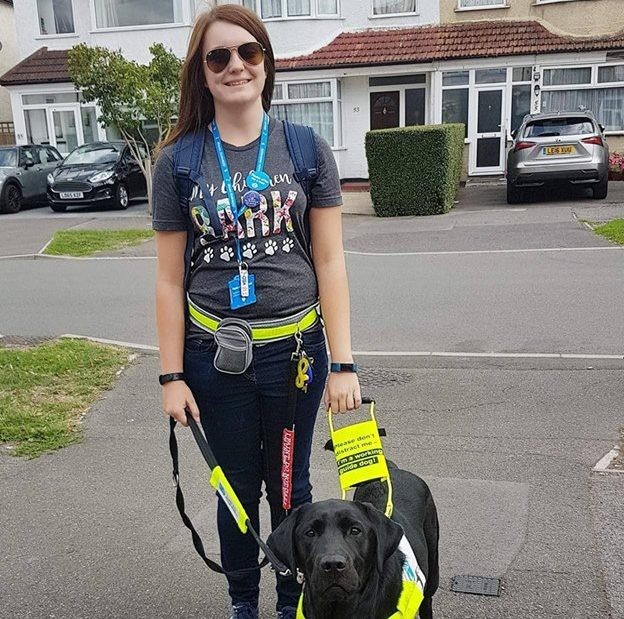The perception of guide dogs often conjures up an image of a yellow Labrador Retriever. However, reality paints a much more diverse picture. A recent incident highlights the misconception that guide dogs must be yellow, sparking a crucial conversation about disability awareness and the diverse appearances of assistance animals.
Megan Taylor, a 22-year-old woman with episodic blindness, experienced a distressing encounter on a bus. A fellow passenger confronted her about her guide dog, Rowley, questioning his presence because he wasn’t yellow. The passenger insisted that “guide dogs are yellow Labradors,” dismissing Rowley’s legitimacy as an assistance animal simply because of his coat color. This incident, unfortunately, isn’t an isolated one, highlighting a broader lack of understanding about guide dogs and their roles.
The Truth About Guide Dog Colors and Breeds
Contrary to popular belief, guide dogs can be of various breeds and colors. While Labrador Retrievers are commonly used due to their temperament, trainability, and size, other breeds like Golden Retrievers, German Shepherds, and even Standard Poodles can also be excellent guide dogs. The determining factor is not the breed or color, but the dog’s temperament, health, and ability to be trained to perform the necessary tasks.
The color of a guide dog’s coat is purely coincidental and has no bearing on its ability to assist its handler. Black guide dogs, like Rowley, are just as capable and well-trained as their yellow or golden counterparts. Focusing on the color rather than the dog’s behavior and the handler’s needs demonstrates a lack of understanding and can lead to discriminatory behavior.
The Essential Roles of Guide Dogs
Guide dogs provide invaluable assistance to individuals with visual impairments, enabling them to navigate the world with greater independence and confidence. Their responsibilities extend far beyond simply guiding their handlers around obstacles. They are trained to:
- Navigate safely through various environments, including streets, sidewalks, and public transportation.
- Alert their handlers to potential hazards, such as traffic, stairs, and low-hanging objects.
- Stop at curbs and steps.
- Find doors and seats.
- Obey commands related to navigation and safety.
Beyond these practical tasks, guide dogs also provide emotional support and companionship, reducing feelings of isolation and improving the overall quality of life for their handlers.
The Impact of Misconceptions and Discrimination
The incident involving Megan and Rowley illustrates the harmful impact of misconceptions about guide dogs. Such encounters can be incredibly stressful and demoralizing for individuals with disabilities, making them feel self-conscious and hesitant to use public spaces.
Megan shared that this wasn’t the first time she had faced abuse on public transport, citing previous incidents of being spat at, stepped over, and accused of being drunk when experiencing medical episodes related to her conditions. These experiences highlight the need for greater awareness and understanding of disabilities and the vital role assistance animals play.
Promoting Awareness and Education
Combating misconceptions about guide dogs requires ongoing education and awareness campaigns. By sharing accurate information and personal stories, we can challenge stereotypes and promote a more inclusive and accepting society. Here are some ways to contribute:
- Educate yourself: Learn about the different types of assistance animals and the laws that protect their handlers.
- Challenge misconceptions: If you hear someone making inaccurate statements about guide dogs, politely correct them with accurate information.
- Be respectful: Treat guide dog handlers with respect and avoid interfering with their work.
- Share stories: Amplify the voices of individuals with disabilities and share their experiences to raise awareness.
A Call for Empathy and Understanding
Megan’s experience serves as a reminder that judging a book by its cover – or a guide dog by its color – can lead to harmful assumptions and discriminatory behavior. By embracing empathy, understanding, and a willingness to learn, we can create a more inclusive and welcoming environment for everyone, regardless of their abilities or the appearance of their assistance animals. Remember, the true value of a guide dog lies not in its color, but in the invaluable assistance and companionship it provides to its handler.
